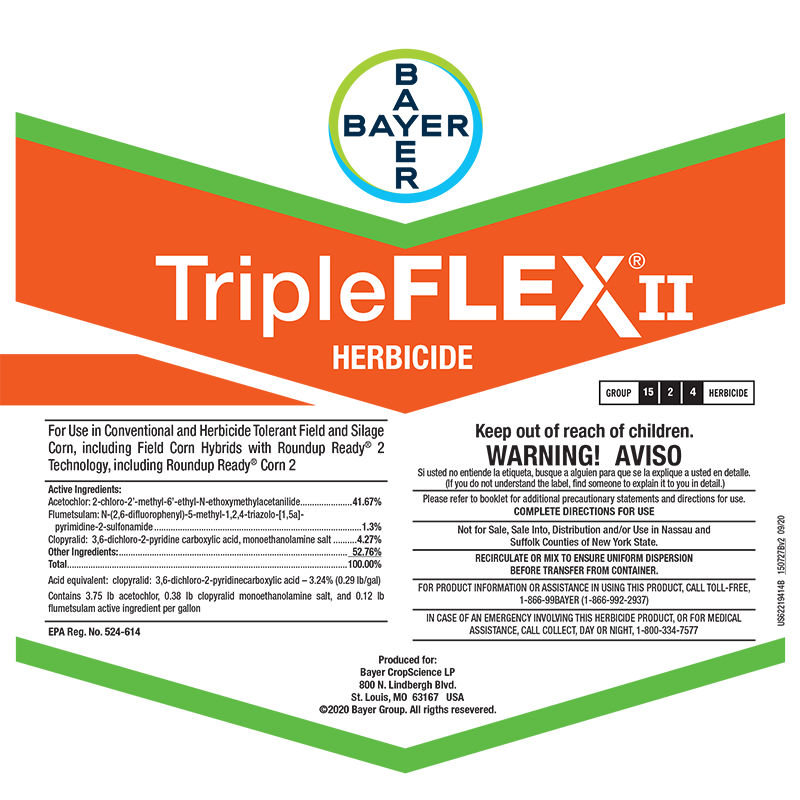Tripleflex II Herbicide
HerbicideTripleFLEX® II herbicide is a premix of acetochlor, flumetsulam and clopyralid. This product contains three modes of action for control of weeds resistant to ALS, glyphosate or triazine. It provides broad-spectrum control of key grass and small- and large-seeded broadleaf weeds – without atrazine. With a flexible application window, TripleFLEX II can be applied preplant, pre-emergence and postemergence in corn up to 11 inches.
Approved In
AL, AR, CO, DE, GA, IA, IL, IN, KS, KY, LA, MD, MI, MN, MO, MS, NC, ND, NE, NJ, NM, NY, OH, OK, PA, SC, SD, TN, TX, VA, VT, WI, WV, WY
Labels / Safety Data Sheets (MSDS)
TRIPLEFLEX II HERBICIDE Label
TRIPLEFLEX II HERBICIDE MSDS - English
TRIPLEFLEX II HERBICIDE MSDS - Spanish
Effective Against
Our portfolio has products to fight a variety of weeds, pests and diseases.
Common Waterhemp
Crabgrass Species
Fall Panicum
Lambsquarters
Palmer Amaranth
Velvetleaf
Registered Crops
Our products are available for use on a variety of different crops.
checkcorn field
checksilage corn
